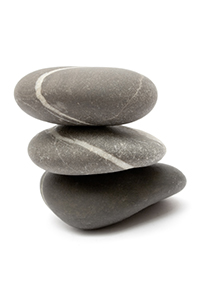What Sound Looks Like
A model was developed to understand relationships between measured sound levels and variables such as climate, topography, human activity, time of day and day of year. In general, the brighter the spot, the greater the sound intensity. Source: National Parks Service
When I was a kid there was much discussion over noise pollution. I don't remember that much was done about it but that there was a lot of talk about it.
A while back I heard a news story that was interesting; it mentioned how scientists are researching how human made noises affect the habits, habitats and ultimately the survival of animals. The scientists have noted that in some natural areas, sound levels are decibels higher. As one of the scientists stated, "Imagine you're an owl looking for your dinner," Fristrup said. "A three decibel increase in sound level cuts in half the area in which you could hear those sounds, he said. "So you are half as efficient in finding food, with a relatively subtle increase in background sound level."
The idea is that scientists are looking at ways to reduce the soundscape in national parks in order for the environment to be more natural for the animals. Makes sense. We try to protect different species by ensuring safe habitats (e.g. the elimination of DDT for the sake of the progeny of Bald Eagle) but we forget that animals rely on all their senses. For some hearing is the dominate sense.
I notice how noisy my environment is when my husband and I sit on our screened porch and try to have a conversation. Behind our home is a wide two lane road. At times it is heavily trafficked as it is one of the major roads to two hospitals and a state university. If a large construction truck, ambulance, bus or a collection of fast moving SUVs ride behind, we sometimes have to halt our conversation in order to be heard. And, we even have a barrier of trees and shrubs between us.
When you look at the above map makes me wonder how much I, one lone person, can make a difference with my soundscape? Living on the East Coast the map looks rather bright which makes me think the turn around is rather bleak. Yet I do believe that we can make a difference, one lone person at a time. Certainly we shouldn't have to halt all our noise but perhaps we can reduce it? Can we eliminate loud powered motors some of the time? One fewer car errand? One fewer cuts with the powered mower or edger? A petition to one's local government for an ordinate for some noise-free zones or noise-free times?
If we think our sounds don't impact the natural world, I have included a link to the David Attenborough's BBC video about the Lyre bird. It is a classic example of how our sounds have changed nature.
What about you? Have you ever thought about noise pollution? How noisy is your environment? Does your town or city do anything to limit noise? Are you even aware of the noise around you?
Click here to hear the Lyre bird.

